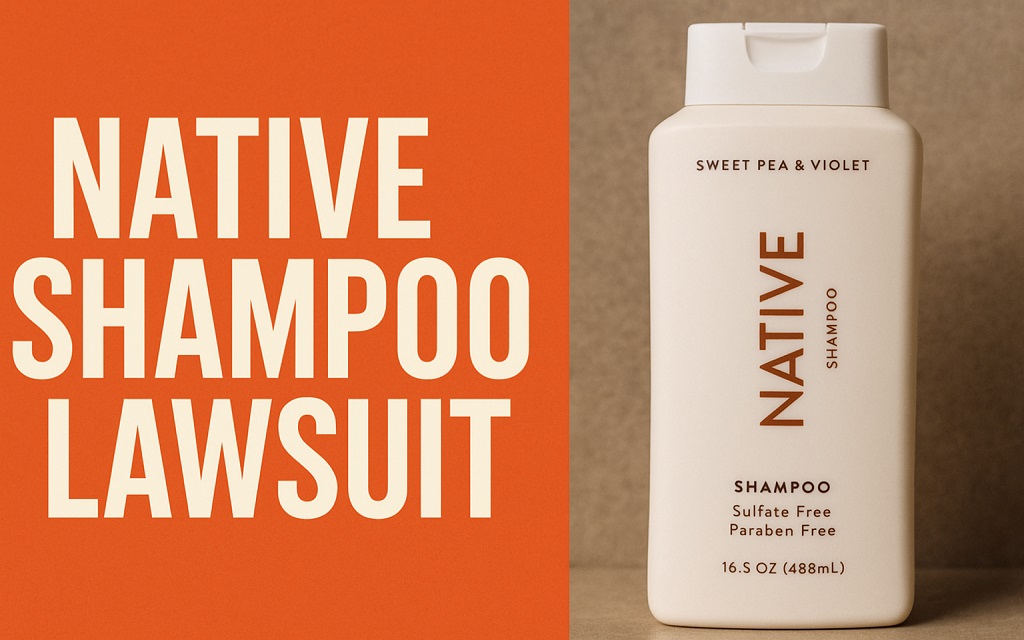Last updated: October 20, 2025
Author: David Howard
Quick take: There is no filed class action we can verify as of October 20, 2025. Attorneys previously explored claims about PFAS and advertising, and an ad self‑regulator ruled on certain Native claims in 2024. California now bans intentionally added PFAS in cosmetics sold in the state (effective Jan 1, 2025), and FDA must publish a PFAS-in-cosmetics report by Dec 29, 2025. Citations are linked inline below.
At a glance
- Status of a lawsuit: ClassAction.org’s Native investigation is marked “Investigation Complete” (May 14, 2025) — not an active lawsuit filing. https://www.classaction.org/native-toothpaste-pfas-lawsuit
- Ad claims decision (2024): The BBB National Programs NAD said P&G (Native) may keep the tagline “Clean. Simple. Effective.” and certain “safe” claims, but should modify/discontinue “simple ingredients” and discontinue “Born in the USA.” (Press release: June 27, 2024). PDF: https://aef.com/wp-content/uploads/2024/08/PressRelease_7277pr-PG.pdf
- California AB 2771: Bans intentionally added PFAS in cosmetics sold in CA starting Jan 1, 2025. Bill text: https://legiscan.com/CA/text/AB2771/id/2609266
- FDA & MoCRA: FDA must publish a PFAS safety assessment report for cosmetics by Dec 29, 2025. FDA page: https://www.fda.gov/cosmetics/cosmetic-ingredients/and-polyfluoroalkyl-substances-pfas-cosmetics
In this guide, we break down everything you need to know about the Native Shampoo Lawsuit—including legal status, product safety facts, and what experts say. If you care about clean beauty and accurate information, this article gives you clarity, not confusion. Let’s separate speculation from facts and uncover what matters most to you.
What is the Native Shampoo Lawsuit?
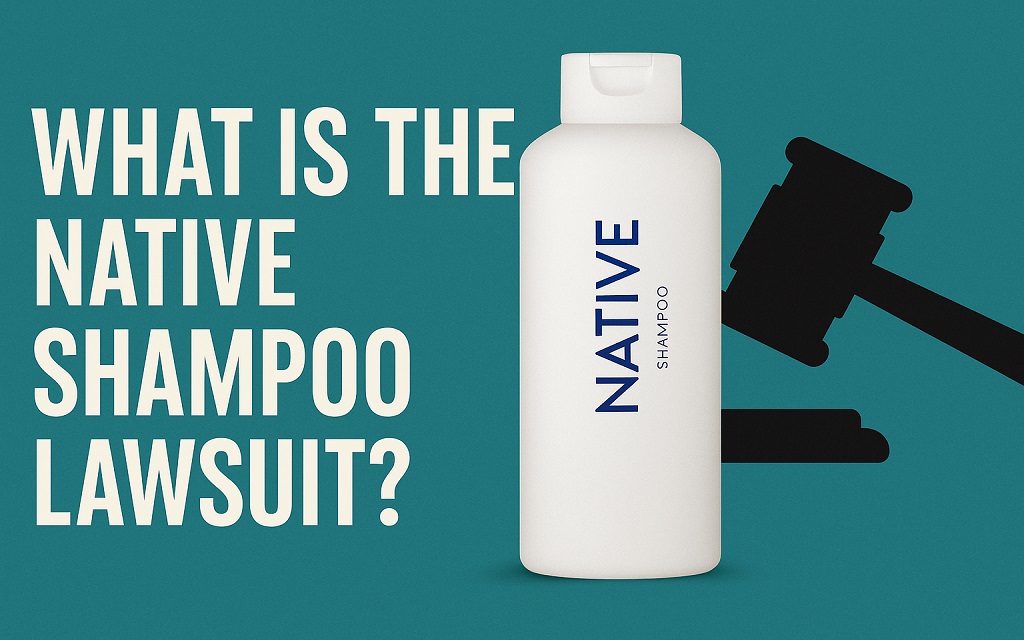
As safety concerns grew on social media and in advocacy circles, online discourse over Native Shampoo exploded in 2023. Reddit threads, TikTok videos, and watchdog investigations have suggested that specific Native hair treatments contain “forever chemicals”—scientifically known as PFAS (per- and polyfluoroalkyl compounds). Because of the potential health risks, the personal care industry has been paying increasing attention to these synthetic compounds.
The growing public concern prompted a legal study to determine whether consumer complaints and product claims may warrant legal action, as opposed to a formal class-action lawsuit. No litigation against Native Shampoo for PFAS has been filed or is pending as of October 2025. Instead, ClassAction.org, a website that monitors product safety allegations and links consumers with lawyers for possible action, submitted the query as a consumer probe.
The way these investigations operate is the source of the misunderstanding. Misconduct or the existence of dangerous chemicals is not verified by a ClassAction.org post. Instead, it indicates that a legal team is examining whether consumer complaints can bolster a possible case under standards for false advertising, product liability, or consumer protection legislation.
So, was Native sued? No. Was it looked into? Yes, however, there was no litigation as a result of the probe being closed later.
Must Read: Raw Sugar Shampoo Lawsuit: All About the Legal Claims and Consumer Concerns
Why Are Consumers Asking About the Native Shampoo Lawsuit?
You may have noticed search results, blog posts, or TikTok videos talking about Native Shampoo and lawsuits. Some mention PFAS. Others claim hair loss or scalp irritation. But what is the real story? You deserve facts—not fear.
It is essential to clarify that, as of October 2025, there is no active lawsuit against Native Shampoo. However, widespread concern over product safety, PFAS contamination, and misleading marketing triggered an investigation. That legal probe later closed without a lawsuit being filed.
Why does this matter for you? Because thousands of people still search for “Native shampoo class action,” “Native shampoo lawsuit 2025,” and “Is Native safe to use?” If you use the product—or if you have stopped using it out of fear—you need accurate information, not internet panic.
What Sparked the Native Shampoo Controversy in the First Place?
You should know that public concern about Native Shampoo started in early 2023. Social media users on Reddit and TikTok raised red flags. Some users claimed hair loss. Others accused the brand of using harmful ingredients despite its “clean” branding.
One keyword appeared across posts: PFAS. These are synthetic chemicals known as per- and polyfluoroalkyl substances. Advocacy groups and online watchdogs warned that PFAS might exist in personal care products—even when not listed.
Native Shampoo appeared on blog lists. A consumer rights website, ClassAction.org, has launched an open investigation. You may have seen headlines that seemed to confirm the presence of dangerous chemicals in shampoo. But was that accurate?
Let’s break it down carefully.
Was Native Shampoo Ever Sued?
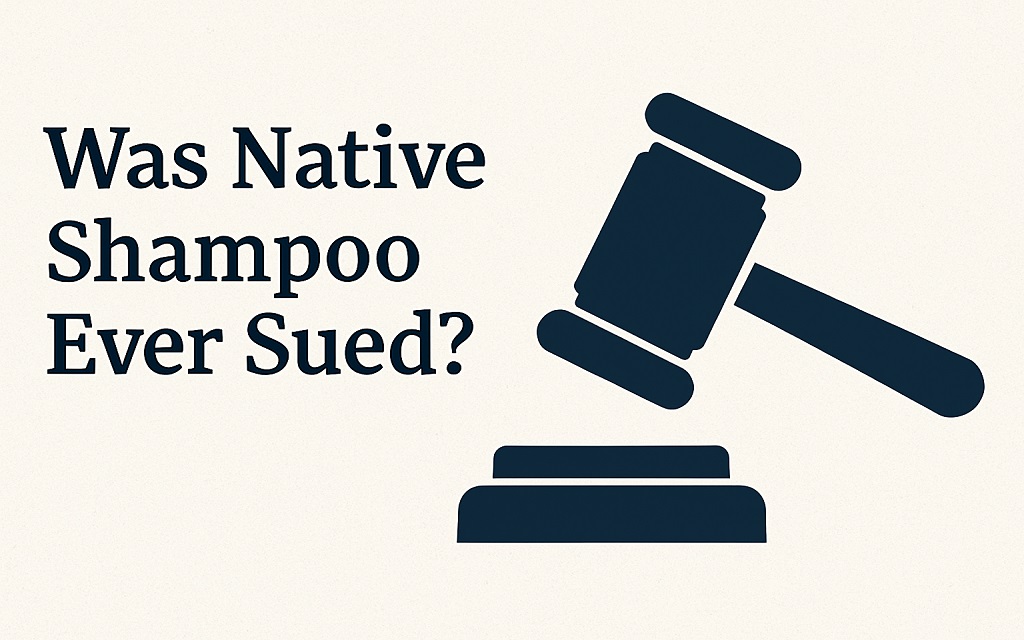
We found no court filings against Native Shampoo as of Oct 20, 2025. You may have seen legal-looking links online. But many of those were calls for investigation, not court filings.
ClassAction.org opened a case page. That page allowed consumers to submit complaints. Lawyers used it to collect information. Their goal was to determine if a class-action lawsuit would be possible under U.S. consumer protection laws.
This is standard practice in legal marketing. But people often confuse these investigations with filed cases. It is essential to understand:
- No formal complaint was filed in federal or state court
- No judge reviewed evidence or arguments
- No settlement or trial took place
- No legal liability was assigned to Native or parent company P&G
As of October 20, 2025, the investigation officially closed.
Is there a “Native shampoo lawsuit” right now?
No court docket we can verify indicates a filed class action specific to Native shampoo as of October 20, 2025. The most cited source is the ClassAction.org page above, which shows the investigation is complete (and not an active filing). We will update this article immediately if a complaint is filed; readers can also search PACER or state court portals.
Important: Media/blog posts discussing “lawsuits” often refer to investigations or potential claims, not an actual case filed with a court. We avoid absolutes and link to primary/official sources wherever possible.
What Did the Legal Investigation Involve?
ClassAction.org helps connect consumers to law firms. In 2023, the site invited consumers to report:
- Hair loss after using Native shampoo
- Scalp problems like dryness or flaking
- Concerns about misleading packaging terms like “clean” or “safe”
- Worries about unlisted PFAS ingredients
Please note that the site did not test the products. It did not confirm any PFAS presence. Instead, it asked, “Has anyone else experienced this?” That method is helpful for early-stage review, but doesn’t create legal proof.
The website updated the case on May 14, 2025, with a statement: “Investigation Closed.” That means the lawyers found insufficient evidence to move forward with litigation. The case page remains online for reference only.
Who Owns Native Shampoo?
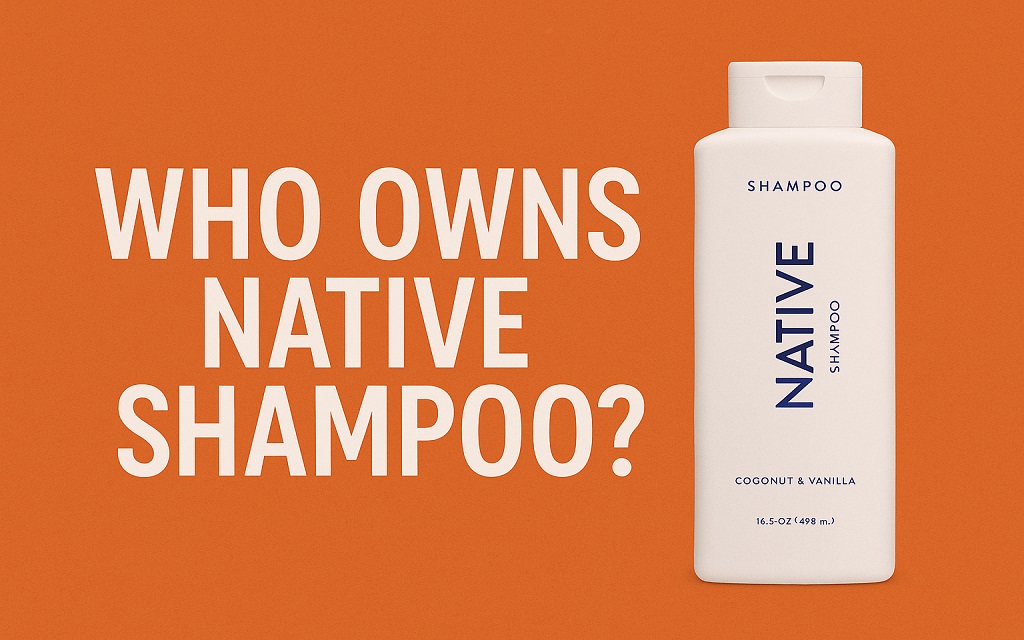
You may think Native is a small indie brand. But Native is actually owned by Procter & Gamble (P&G), a major multinational company. P&G bought Native in 2017 for a reported $100 million. Since then, the brand expanded from deodorant into shampoo, conditioner, and body wash.
Why does ownership matter?
Because P&G brings resources and scrutiny. Their products undergo:
- Advertising review by compliance teams
- Ingredient testing under corporate guidelines
- Oversight from U.S. and international regulators
When critics question Native’s safety, they are also questioning P&G’s regulatory systems. That shifts the conversation from a niche brand to a global company under constant review.
Did Any Regulatory Body Review Native’s Claims?
Yes. The BBB National Programs’ National Advertising Division (NAD) examined Native’s marketing in 2024. This case had nothing to do with PFAS. But it focused on whether phrases like:
- “Simple ingredients”
- “Safe and clean”
- “Made without sulfates, parabens, or dyes”
…could mislead consumers. You should know that the NAD doesn’t test products. It evaluates language and claims in accordance with advertising law.
The NAD concluded:
- Native can use the phrase “Simple. Effective. Safe.” as a tagline—it counts as puffery
- The brand must clarify the meaning of “simple ingredients.”
- The claim “safe ingredients” must be backed by evidence
- P&G agreed to comply with the recommendations
The brand has updated its messaging. However, the advertising authority found no deception serious enough to warrant penalties.
Which Native Products Were Mentioned in Complaints?
The ClassAction.org page invited reports on all Native hair products. But two products stood out in user complaints:
- Cucumber & Mint Shampoo
- Cucumber & Mint Conditioner
Why these two? You should note:
- This scent line was a top seller. More buyers mean more reviews.
- The packaging emphasized “clean,” “safe,” and “simple.”
- Social posts about hair loss often referenced this formula
It’s essential to note that no scientific study has linked this product to harm. No lab test showed PFAS. But the combination of popularity and branding made these products the most discussed.
What Are PFAS and Why Do They Raise Concerns?

PFAS are artificial chemicals. Manufacturers use them in products that resist heat, grease, or water. You can find PFAS in:
- Nonstick cookware
- Water-resistant clothing
- Fast food wrappers
- Firefighting foam
In cosmetics, PFAS help with texture or staying power. You may see them in:
- Long-wear foundation
- Waterproof mascara
- Frizz-fighting hair sprays
But why are they controversial?
Scientists have linked some PFAS compounds to health risks:
- Hormone disruption
- Fertility problems
- Certain cancers
- Liver and kidney stress
Not all PFAS are equally harmful. The U.S. EPA regulates a few, like PFOA and PFOS. But most PFAS remain unregulated. That raises questions—especially when trace amounts show up in personal care items.
Did Native Products Test Positive for PFAS?
No accredited lab has published PFAS findings in Native Shampoo. You may find blogs that suggest a link. You may see influencers say PFAS are “probably” present. But no report has confirmed:
- PFAS type
- Amount (measured in parts per trillion)
- Source (intentional or contamination)
That distinction matters. PFAS lawsuits require:
- Proof that the chemical exists in the product
- Evidence that the amount poses a risk
- Medical or environmental harm tied to exposure
Without lab data, courts will not allow a lawsuit to proceed. That’s why ClassAction.org closed the case. Their legal team lacked proof.
How Do Labs Detect PFAS in Shampoo?
If you ever question the presence of PFAS in a personal care product, lab testing is the only way to know for sure. You should be aware of two main test types:
1. Targeted Testing (LC-MS/MS)
- Uses liquid chromatography and mass spectrometry
- Detects specific PFAS compounds like PFOA or GenX
- Measures at parts-per-trillion (ppt) levels
- Very accurate—but only for known chemicals
2. Total Fluorine or Total Organic Fluorine (TOF)
- Measures overall fluorine in the sample
- Indicates possible PFAS—but not which ones
- Detects unintentional contamination
- Useful for general screening
You should ask:
- Was the lab accredited?
- Did it test for known PFAS or just fluorine?
- Did it release results publicly?
In Native’s case, no public test exists. That’s a key reason no lawsuit advanced.
How Do Regulators Define “Intentionally Added” PFAS and Why Does That Phrase Matter?
You should understand what lawmakers mean. The phrase “intentionally added PFAS” refers to chemicals that a brand intentionally adds to a formula. It signals a functional choice. It covers topics such as glide, slip, water resistance, and texture. However, it does not cover accidental traces from pipes, tanks, hoses, or packaging.
It is essential to note that California has established a clear rule. The California PFAS‑Free Cosmetics Act (AB 2771) prohibits the manufacture or sale of any cosmetic product that contains intentionally added PFAS. The law took effect January 1, 2025. The text states the ban plainly and ties it to the manufacturer’s intent.
You should note the scope. Analysts point to a class that includes thousands of PFAS molecules. A legal briefing describes the shift as a “significant expansion” because it encompasses far more than a short list of legacy PFAS. That point matters for haircare lines that sell in California.
You may ask how many states now move in the same direction. It is essential to know that multiple states added cosmetic PFAS controls in 2025. A legal survey notes bans and reporting rules that start in 2025 and extend into the next decade. Brands must track staggered deadlines and different definitions of “intentionally added.”
You should connect the dots to Native. No public proof shows that Native ever added PFAS on purpose. The California rule focuses on intent. Native products remain on California shelves. That fact signals compliance under AB 2771 as of 2025.
Quick takeaways
- You should read “intentionally added” as a bright line rule
- It is essential to know that incidental traces sit outside the ban
- You should expect more state rules over the next few years.
What Does MoCRA Require From Haircare Brands?

You should get familiar with MoCRA, the most critical U.S. cosmetics reform in decades. Congress passed MoCRA in 2022. The law upgrades FDA oversight. The FDA now holds more tools for safety, records, and recalls.
It is essential to know the headline. MoCRA directs the FDA to assess PFAS in cosmetics and to publish a report on PFAS. The deadline sits in December 2025. The FDA’s PFAS page repeats the date and frames the scope of the safety review.
You should also consider day-to-day duties. MoCRA adds:
- Safety substantiation files for each product
- Registration of facilities
- Good Manufacturing Practices rules
- Serious adverse event reporting within tight windows
A recent compliance brief notes FDA movement on GMP and references ISO 22716 as a possible framework. Timelines show proposal work in 2024 and finalization targets in 2025.
You may wonder what that means for Native users. It is essential to note that MoCRA requires documentation to support every safety claim. A P&G brand must keep hazard assessments and exposure rationales. The FDA can ask for those files. The FDA also expects reports to be submitted when a serious adverse event occurs.
Two key stats you should keep in mind
- Federal PFAS report due December 29, 2025, per FDA
- GMP regulation target by late 2025 per industry compliance guidance.
How Did the NAD Evaluate Native’s “Safe” and “Simple” Claims?
You should see how a national ad watchdog assessed Native. The National Advertising Division (NAD) reviewed P&G’s claims in June–July 2024 after a competitor challenge. The NAD is part of BBB National Programs. The body examines ad messages and recommends fixes.
It is essential to know the outcome. The NAD found support for monadic “safe” claims when tied to use as directed. The NAD recommended changes to broad “simple ingredients” language. Additionally, the NAD also told P&G to discontinue a “Born in the USA” message because support did not meet the standard. P&G agreed to follow the guidance.
You should ask why that matters for the PFAS talk. Advertising scrutiny targets meaning. A phrase like “simple ingredients” can mislead if consumers hear “all natural” or “nothing synthetic.” The NAD pushed precision. Native kept the core “Simple. Effective. Safe.” line as puffery. The brand trimmed other lines to avoid over‑promise.
You may want a quick proof point. The official NAD news post, dated June 27, 2024, outlines the recommendations in detail. Trade media coverage the following week echoed the same themes.
Why you should care
- You should read “safe” as “safe when used as directed.”
- It is essential to know that broad simplicity claims invite pushback
- You should look for tighter wording in 2024–2025 packaging
Do Ingredient Lists Reveal PFAS In A Shampoo Formula?
Labels list intentional ingredients only; trace contamination requires lab testing. U.S. cosmetic rules list intentional ingredients. Labels do not reveal process contamination or packaging migration. Trace fluorine does not show up on a label unless a PFAS was added on purpose.
Understanding typical PFAS flags is crucial. PTFE, perfluorodecalin, or perfluorooctyl triethoxysilane are occasionally listed in cosmetics. Hair shampoos rarely list those names. Native bottle copy for main shampoos shows surfactants, conditioning agents, and fragrance. A PFAS acronym does not appear on those lists on EWG pages.
You should ask what to do when you see online claims about PFAS. The answer points back to lab work. Only LC‑MS/MS targeted panels or total fluorine screens can confirm a PFAS signal. No accredited public test ties Native shampoos to a PFAS profile. That gap explains why no lawsuit moved forward.
You may want a quick rule of thumb. Labels help you avoid known PFAS ingredients. Labels do not answer trace questions. Only labs do.
What Do EWG Skin Deep Scores Tell You About Native Shampoos?
You should use third‑party databases for a quick view—the EWG Skin Deep® database rates products from 1 to 10. EWG calls 1–2 low hazard, 3–6 moderate, and 7–10 high based on ingredient concerns and data strength.
It is essential to note that Native entries typically fall within the low-to-moderate band in many cases. A search page shows Native Volumizing Shampoo, Cucumber & Mint flagged as a moderate hazard—a companion page groups Native shampoos and conditioners along the same range. Scores reflect fragrance and typical surfactants rather than PFAS tags.
You should treat the scores as a screening tool. EWG does not run PFAS tests on bottles. EWG compiles ingredient disclosures and science summaries. The site helps you spot allergens or sensitizers. The site does not confirm contamination.
You may ask for a quick metric to remember. A mid‑single‑digit EWG score does not prove harm. It signals ingredients that carry mixed evidence or irritant risk for some users. The site explains that the hazard score reflects known and suspected hazards linked to the ingredients.
How Does “No Active Lawsuit” Fit The Public Record As Of 2025?
You should verify the status on sources that track investigations. The ClassAction.org page that sparked the talk now shows “Investigation Complete” and a last updated date of May 14, 2025. The page title asks about PFAS in Native products. The page now closes the loop. Attorneys are no longer pursuing the matter.
It is essential to know that ClassAction.org runs many open probes and posts settlement news. The site acts as an intake hub. A general info page explains how users can view active investigations and class actions. That context helps you read the Native page as a past inquiry, not a filed case.
You should anchor the timeline. The ad decision arrived in June 2024. The investigation closed in May 2025. State PFAS bans for cosmetics took effect in January 2025 in California. The FDA PFAS report arrives in December 2025. The sequence shows scrutiny, not liability.
Two quick stats you can cite in outreach
- Investigation closure date May 14, 2025, per the case page
- California’s PFAS cosmetic ban start date is January 1, 2025, per the bill text.
Do Social Posts And Reviews Prove Harm Or Legal Liability?
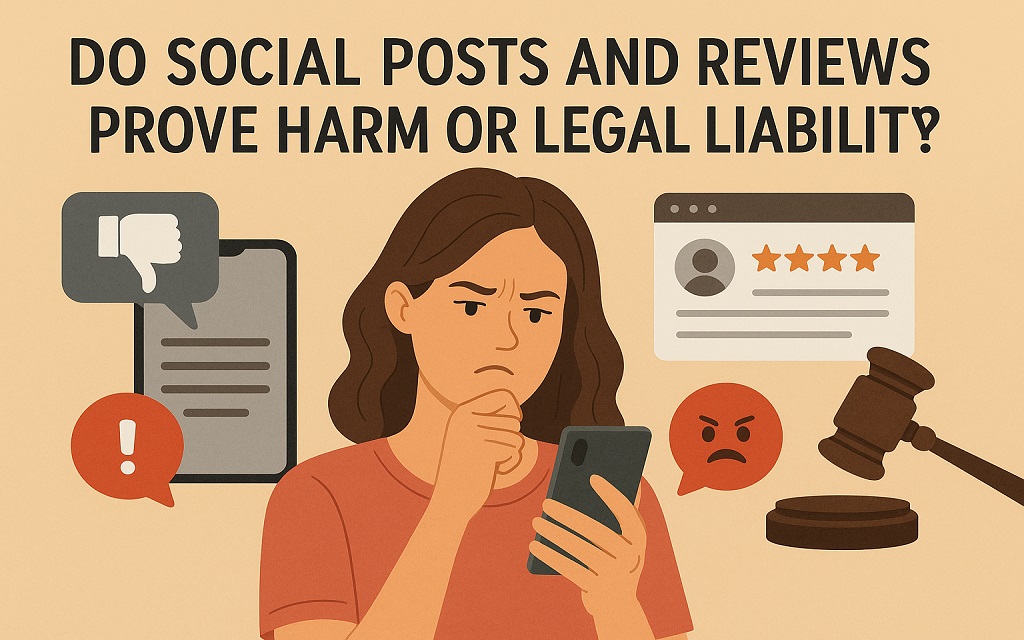
You should separate the signal from the proof. Social media posts can show patterns. Courts need medical records, lab data, and causation.
It is essential to know how legal teams screen claims. Lawyers look for:
- An apparent injury that a doctor can diagnose
- A product link backed by tests or records
- Proof of purchase and batch codes
- A marketing message that crosses a legal line
You should view the broader beauty category as context. A legal news page on the same site reports settlements in unrelated haircare matters, such as benzene in select dry shampoo lines. That shows how evidence can push a case forward in other product sets when contamination is confirmed.
You may ask what that means for your own routine. You should keep photos, receipts, and notes if any reaction occurs. Also, you should seek a dermatologist to rule out other causes. MoCRA now requires event tracking and FDA reporting for severe cases.
How Should You Read “Clean,” “Natural,” And “Safe” On Haircare Labels?
You should decode common claims. The FDA does not define “clean” or “natural” for cosmetics. Advertisers know those words carry halo effects. The NAD case demonstrates that a general “safe” line can be considered puffery when applied to everyday use. Broader “simple ingredients” lines need care or modification.
It is essential to know how to shop smarter. You should:
- Check independent databases for allergens
- Look for third‑party seals like EWG Verified, NSF/ANSI 305, or Made Safe
- Avoid obvious PFAS words such as PTFE or perfluoro‑ on makeup labels
- Keep a short routine to cut exposure points
- You should judge claims in context. A “free from sulfates” line helps some scalps. A “free from parabens” line reflects a policy choice. None of those lines answers the PFAS question. Only lab tests do.
What Practical Steps Help If You Suspect A Reaction?
You should protect your health first. You should stop using. However, you should switch to a gentle wash and keep the routine simple for a few weeks.
It is essential to know which records help a doctor and a lawyer. You should collect:
- Photos of the scalp on set dates
- Receipts and order confirmations
- Box panels that show batch codes
- Notes on timing and other products used
You should book a dermatologist. A clinician can check for dermatitis, telogen effluvium, or fungal issues. A clinician can enter the suspected product in the chart.
You may ask who else to notify. You should file a cosmetic complaint through the FDA’s MedWatch system when a severe reaction occurs. MoCRA expects tracking. That paper trail helps public health teams and can trigger reviews.
Where Do Alternatives Fit If You Prefer A PFAS‑Avoidant Routine?
You should aim for clarity and minimalism. A lean routine cuts variables. Solid bars and refill systems reduce packaging contact points. Clean‑label brands often publish whole ingredient policies.
It is essential to know how to screen options fast. You should look up candidates on EWG. You should scan for PFAS prefixes and for fragrance if you are sensitive to scents. However, you should consider a patch test before a complete switch. EWG category pages list many Native competitors and display hazard bands for quick scanning.
You may also want to track evolving state rules. A 2025 legal survey flags shifting definitions and reporting requirements through 2032. That trend favors brands that publish supplier standards and run periodic fluorine screens even when not required.
How Do Labs Actually Test for PFAS in Shampoo?
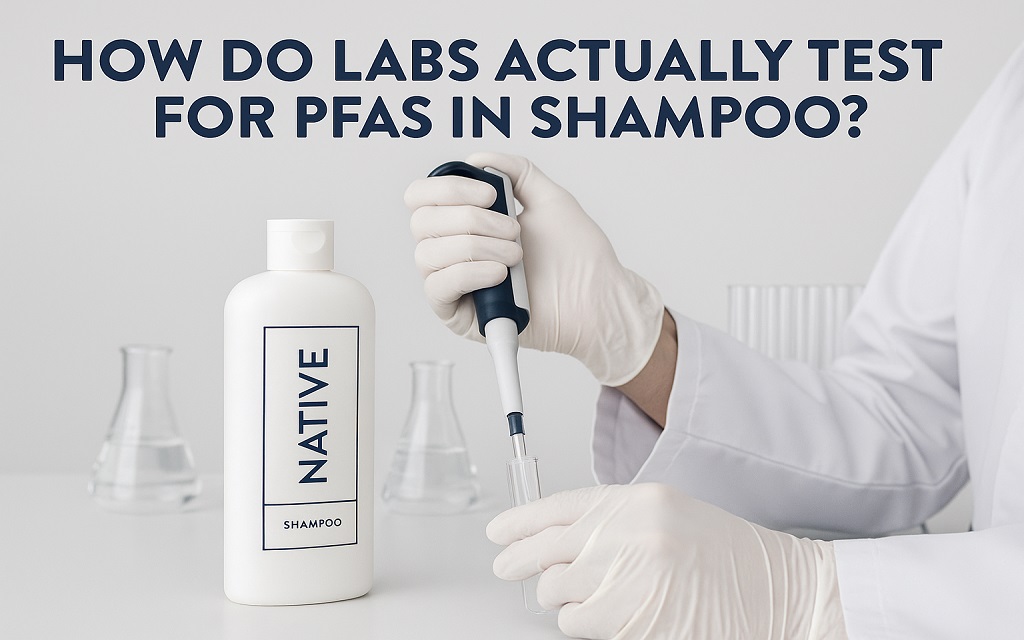
You should know that PFAS detection requires sensitive instruments. PFAS often exist at trace levels. Not parts per million, but parts per trillion (ppt). Only specialized labs can identify PFAS in shampoo and other personal care products.
It is essential to be familiar with two standard test methods.
1. Targeted Testing with LC-MS/MS
You should remember this abbreviation. LC-MS/MS stands for Liquid Chromatography–Tandem Mass Spectrometry. It detects known PFAS molecules by their mass and charge. This test:
- Targets legacy PFAS like PFOA, PFOS, and GenX
- Reports exact concentrations in ppt
- Confirms presence with confidence
- Does not detect unknown PFAS
You may want to know how this works. A shampoo sample is filtered, extracted, and separated. Each known PFAS produces a unique spectral fingerprint. That’s how labs determine if one or more PFAS types exist.
2. Total Organic Fluorine (TOF) Testing
You should know the second method. TOF testing generally looks for fluorine atoms, not specific PFAS. The test measures total fluorine bound to organic molecules. This test:
- Screens for possible PFAS contamination
- Does not identify specific compounds
- Flags suspicious levels when fluorine appears
It is essential to understand the limitations. A high TOF score may indicate the presence of trace PFAS, other fluorinated materials, or contamination. It does not confirm a harmful PFAS presence.
You should always ask three questions:
- Was the lab accredited?
- Did the report use LC-MS/MS or just TOF?
- Did it list PFAS names or just total fluorine?
Only those answers provide real context.
Why Do Test Methods Matter in a Legal or Regulatory Claim?
You should consider how courts and regulators view lab data. Without precise test methods, PFAS claims remain speculative. If a lawsuit alleges PFAS contamination, the legal team must present:
- Chain of custody on samples
- Lab credentials
- Chemical identification by LC-MS/MS
- Levels above regulatory or safety thresholds
It is essential to note that targeted testing carries greater legal weight. TOF is useful for screening but weaker for litigation.
You may want to consider recent PFAS lawsuits involving cosmetics. Most proceed only after high-level PFAS content is proven through validated LC-MS/MS tests. That makes testing central to every PFAS-related legal claim.
What PFAS Levels Raise Concern in Hair Products?
You may wonder how much PFAS is too much. That answer depends on context. Most studies focus on water exposure, not shampoo. However, general guidance exists.
The U.S. Environmental Protection Agency (EPA) set maximum contaminant levels in water at:
- 4 parts per trillion (ppt) for PFOA
- 4 ppt for PFOS
These levels apply to drinking water, not shampoo. Still, the thresholds offer reference points for risk awareness.
It is essential to understand that skin exposure behaves differently. Shampoo stays on the scalp briefly. It rinses off with water. Absorption is lower than ingestion. But concerns still rise when PFAS appear, even in small amounts.
You should also note that no federal limit currently exists for PFAS in personal care items. That gap makes comparisons difficult. That’s why lab-confirmed PFAS presence matters even more in lawsuits.
Why Did No Lawsuit Move Forward Against Native?
You should remember one core fact. No law firm filed an actual lawsuit against Native Shampoo. The 2023–2025 investigation closed without legal action. The lawyers likely decided that:
- No PFAS test confirmed product contamination
- No consumer submitted conclusive injury evidence
- No regulator flagged the products for enforcement
- No marketing claim crossed a legal threshold
It is essential to know that courts require proof of harm. Allegations are not enough. Judges look for:
- Documented injuries (e.g., doctor-confirmed hair loss)
- Link between the product and the condition
- Evidence that the injury wouldn’t have happened otherwise
You should also know that plaintiffs must prove the label misled them. That means the words “clean,” “safe,” or “simple” must have directly influenced the purchase, and the product must contradict those claims materially.
None of that happened in the Native case. The investigation stopped short of a legal filing.
How Do Personal Care PFAS Investigations Differ from Water Cases?
You may think PFAS rules are strict everywhere. That’s true for water. But shampoo and cosmetics operate under different systems.
It is essential to know that EPA rules apply to water systems, not body products. States like California now regulate cosmetics directly. Their laws cover intentionally added PFAS but allow incidental traces for now.
You should compare this with environmental law. In water, any PFAS presence may trigger compliance issues. In shampoo, PFAS must be intentional and above trace levels to draw penalties—unless new rules say otherwise.
That’s why a PFAS lab hit in a shampoo doesn’t guarantee legal fallout. Intent, levels, and function all matter.
Can You File a Product Complaint Without a Lawsuit?
Yes. You have every right to report concerns. Even if no lawsuit moves forward, consumers should speak up.
You should consider these steps:
FDA MedWatch
File a cosmetic product complaint
Report hair loss, irritation, or allergic reactions
Include product name, batch, and photos
Consumer Product Safety Commission (CPSC)
File packaging-related complaints
Report faulty seals, misleading packaging, or leaky bottles
BBB National Programs
Report misleading marketing
Cite claims like “safe” or “natural” that you feel were deceptive
EWG or Nonprofits
Share experiences
Ask for ingredient safety updates
It is essential to understand that strong complaints can prompt internal reviews. Regulators use this input when setting priorities. Even without a court case, pressure matters.
What Are Signs That a Shampoo May Not Be Fully “Clean”?
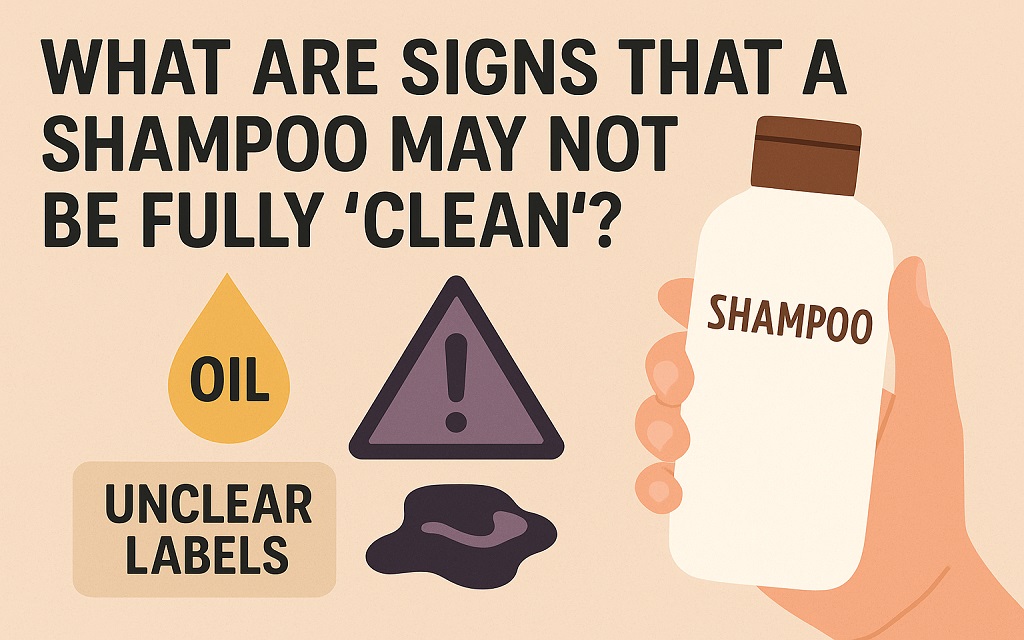
You should be aware that many shampoos use the word “clean” on their labels. But that term has no legal meaning. It’s a marketing phrase.
You should read ingredient labels carefully. Red flags may include:
- Broad “fragrance” listing (hides many chemicals)
- Harsh surfactants (e.g., SLS or SLES)
- Unfamiliar synthetic polymers
- Long chemical names ending in -eth, -cone, or -silane
It is important to remember that not all synthetics are harmful. However, it might not meet your expectations if a brand advertises “clean beauty” while continuing to employ harsh ingredients.
You should look for:
- Ingredient transparency
- Safety claims backed by third parties
- EWG scores or certifications like “Made Safe”
These signals increase consumer trust.
What Are Examples of Lawsuits in the Clean Beauty Space?
Consider examining other lawsuits for context. Many clean-label brands have faced litigation in recent years. Common themes include:
- Deceptive marketing
- Unproven “natural” claims
- Ingredient contamination
It is essential to know a few specific cases:
- Batiste Dry Shampoo: Lawsuit over benzene contamination in 2022–2023. Settled after lab tests confirmed unsafe levels.
- Herbal Essences and Pantene: 2022 class action alleged formaldehyde-releasing preservatives.
- TRESemmé: Lawsuit claimed DMDM hydantoin caused hair loss.
- Alba Botanica: Sued for marketing products as “reef safe” while including oxybenzone.
You should note the typical pattern. Real lawsuits follow confirmed testing or clear mislabeling. Internet speculation alone doesn’t create a legal case.
In Native’s case, the evidence never reached that threshold. So the case remained an inquiry, not a trial.
What Legal Threshold Must Be Met to Certify a Class Action?
You should be aware that class actions must comply with strict legal requirements. Courts do not allow random complaints to be certified as a class. Four key requirements apply:
Numerosity
Enough consumers must be affected to justify a group case
Commonality
All members must share common questions of law or fact
Typicality
The lead plaintiff’s claims must be typical of the group
Adequacy
The representative must protect the interests of the class
It is essential to know that in product cases, courts ask:
- Did everyone buy the same product line?
- Were the damages the same?
- Did the alleged harm result from the same label, claim, or ingredient?
You should remember that emotional distress or fear alone rarely qualifies. Concrete economic injury or physical harm must be proven.
In the Native inquiry, those standards were not met.
What Should You Collect If You Suspect Harm?
You should prepare in case you experience a reaction and wish to pursue a claim. The proper documentation increases your chances of success.
You should gather:
- Product bottle with lot number
- Receipt or order confirmation
- Photos of the reaction over time
- Doctor’s notes with diagnosis
- Proof of ingredients at the time of purchase
- Screenshots of claims made online or in ads
- Correspondence with customer service
- Refund request responses
It is essential to understand that courts and lawyers require evidence to support their decisions. Memory and speculation are not enough. The more material you save, the stronger your potential case.
Can You Still Sue If a Case Was Already Closed?
You may ask if it’s too late. The answer depends on new evidence. ClassAction.org closed its inquiry. That does not block individual lawsuits. However, you must show:
- New injury not captured in earlier reviews
- Proof of PFAS contamination through lab testing
- Direct link between the product and the harm
It is essential to be aware that statutes of limitation apply. You must act within 1–4 years of the injury, depending on state law. You should consult a product liability lawyer if your evidence meets these standards.
What Is the Final Status of the Native Shampoo Lawsuit as of October 2025?
You should focus on facts. The most recent update from ClassAction.org marks the Native shampoo case as “Investigation Closed.” No federal court shows filings. No state court displays active dockets. Additionally, no recall notices or FDA warnings have been issued against the product line.
It is essential to know that Procter & Gamble, Native’s parent company, faced scrutiny—but not legal liability. Native modified some ad claims in 2024 after a review by the National Advertising Division (NAD). That case focused on the use of words like “safe” and “simple ingredients.” The NAD did not rule on PFAS or product safety.
You should note that PFAS concerns triggered the investigation. But no lab tests confirmed high levels. No plaintiffs brought actionable harm claims. No judge issued rulings or findings.
So, what does this mean?
- No PFAS-based class action exists.
- No consumer protection ruling found Native liable
- No settlement has been reached
- No defect has been proven
That is the full status as of October 2025.
What Broader PFAS Rules Affect Shampoo Brands Now?
You should closely monitor developments at the state and federal levels. PFAS rules are expanding across the beauty and personal care sector. Even though Native did not face direct enforcement, legal and regulatory changes shape the industry in real time.
It is crucial to know four active forces now reshaping PFAS oversight:
California AB 2771
Effective January 1, 2025
Bans intentionally added PFAS in cosmetics
Covers all rinse-off and leave-in hair products
MoCRA (Modernization of Cosmetics Regulation Act)
Signed in 2022
Requires safety substantiation and adverse event tracking
Demands ingredient documentation and FDA access
Directs the FDA to publish a PFAS report by December 2025
FTC Green Guides Update
Review of “clean,” “sustainable,” and “non-toxic” claims
Affects shampoo ads and digital marketing
Enforcement expected in 2025–2026
State-by-state laws
Washington, Colorado, and Oregon have set phase-outs
Other states may follow with PFAS testing or disclosure laws
You should connect this to purchasing. Any shampoo brand that sells nationally must now comply with California’s ban on PFAS additives. That includes store sales and e-commerce orders shipped into California.
What Is the Risk of Future Litigation for Shampoo Brands?
You should expect more lawsuits—just not necessarily against Native. As PFAS data expands, legal teams will monitor:
- Lab-confirmed contamination
- Gaps between ad claims and ingredients
- Health complaints supported by doctors
- Consumer trust violations
It is essential to know that future lawsuits require verified harm, not just fear. But courts and lawyers act when:
- PFAS levels exceed thresholds
- Ingredients conflict with claims like “safe”
- Adverse reactions are widespread and medically diagnosed
- Companies hide risks or fail to respond
You may ask if Native could still face future action. That depends on new evidence. So far, nothing new has emerged since the case closed.
Must Read: OGX Lawsuit: What You Need to Know About Hair Loss Claims
How Can You Tell If a “Clean” Shampoo Is Truly PFAS-Free?
You should take five simple steps to verify cleaner choices:
Avoid fluorinated terms
Do not buy products listing PTFE, perfluoroalkyl, or fluoropolymer ingredients.
Use EWG’s Skin Deep tool
Check hazard scores and ingredient profiles.
Watch for allergens, hormone disruptors, or mystery “fragrance.”
Look for third-party certifications.
Labels like EWG Verified, NSF/ANSI 305, or COSMOS Organic suggest chemical screening.
Read complete ingredient lists.
Be skeptical of brands that use vague, incomplete, or misleading label language.
Research PFAS testing
Some indie brands publish lab results or fluorine testing to show their formulas meet PFAS-free standards.
It is essential to note that “clean” has no legal significance. Brands define it as they wish. You define your standard.
What Should You Do If You’re Still Concerned About Native Shampoo?
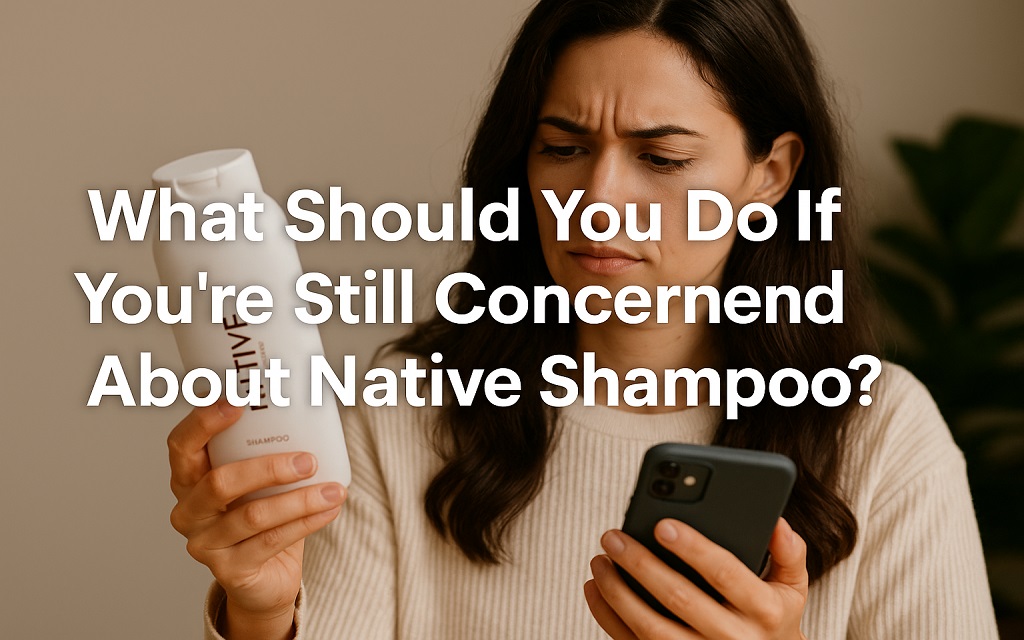
You should choose based on your comfort level. You should not feel pressured to stop using a product if you’ve had no issues. Additionally, you should also feel empowered to switch if you prefer more transparency.
If you remain concerned:
- Save receipts and batch numbers
- Report any irritation or reactions through the FDA MedWatch portal
- Use less product overall or rotate different brands
- Seek a dermatologist’s opinion if you experience hair loss
It is essential to recognize that numerous factors influence hair health. PFAS exposure from shampoo is still under scientific review. Water quality, hormone shifts, stress, and styling damage also affect results.
What If You Want to Talk to a Lawyer?
You should only contact a lawyer if:
- You have medical records confirming harm
- You have proof that the product was the cause
- You can show receipts and product use
- You can document changes that align with use
It is crucial to gather a legal packet before contacting any firm. Include:
- Timeline of use
- Product photos and packaging
- Doctor’s notes
- Communication with the company
- Screenshots of marketing promises
Lawyers will only consider a case if injury, deception, and evidence align.
How Should You Read Articles About Lawsuits Like This?
You should always fact-check headlines. Many blogs and TikToks use the word “lawsuit” for clicks. But if no court filing occurred, then no case exists.
- You should verify:
- Source of the claim
- Date of the article
- Outcome of any investigation
- Any lab results cited
You may want to bookmark:
- ClassAction.org
- FDA’s cosmetics complaint portal
- California Department of Public Health PFAS updates
- EWG Skin Deep database
- BBB National Programs NAD case archive
It is crucial to separate speculation from real enforcement.
What Terms Are Often Misunderstood in Clean Beauty Lawsuits?
You should break down five key terms that often confuse consumers.
Safe
Means “safe when used as directed” in most cases
Does not mean “zero risk” for every user
Clean
Refers to formulation philosophy, not ingredient count
Can still include synthetics if free from specific controversial chemicals
Natural
No legal definition under U.S. law
Often used even with synthetic stabilizers
PFAS-Free
May mean “no intentionally added PFAS”
Trace levels from contamination may still exist
Fragrance-Free
Means no synthetic or natural fragrance added
But essential oils or masking agents may still be present
It is important to read labels in full—not just front-facing claims.
What Is the Final Verdict on the Native Shampoo Lawsuit?
You should walk away with clarity. The investigation into Native Shampoo ended. The inquiry began due to consumer complaints and concerns about PFAS. No lawsuit followed. No court reviewed the evidence. Additionally, no penalty was imposed.
It is important to repeat:
- ClassAction.org closed the case in May 2025
- The FDA has not flagged Native shampoo
- California’s PFAS cosmetic ban is now in effect
- Native remains on shelves in California and nationally
- No scientific evidence links the shampoo to hair loss
- EWG ratings show moderate hazard due to surfactants and fragrance—not PFAS
You should trust what is proven. Misinformation spreads quickly in wellness spaces. But facts do not.
What Can Consumers Do to Stay Informed and Protected?
You should take ownership of your health and choices. The personal care market moves fast. Brands change formulas. Laws evolve.
Here’s what helps:
- Track ingredients that affect your body
- Choose brands that disclose testing
- Report issues to regulators—even if no lawsuit exists
- Follow updates from EWG, FDA, and trusted news outlets
- Ask dermatologists about reactions, not just influencers
It is essential to remember that the burden of proof lies with lawyers and brands—not consumers. But your voice influences safety trends, public attention, and regulatory momentum.
FAQs
Is there a current class action against Native shampoo?
We can’t verify any filed class action specific to Native shampoo as of October 20, 2025. A prior investigation (ClassAction.org) is marked complete.
Did regulators say Native products are unsafe?
No. A 2024 NAD decision addressed advertising claims (e.g., “simple ingredients,” “Born in the USA”), not product safety defects.
Are PFAS banned in cosmetics?
California bans intentionally added PFAS in cosmetics sold in the state starting January 1, 2025. Other jurisdictions may differ.
Conclusion
You deserve honesty from brands that promise purity. You deserve clarity from articles that use the word “lawsuit.” Also, you deserve science over speculation.
As of October 2025, Native Shampoo has not been sued. No PFAS levels have been proven in court. But attention to safety—and advertising integrity—remains critical. Choose what works best for your body. And use every tool available to make informed decisions. As of October 2025, there is no active class action lawsuit against Native Shampoo. Here’s what we know:
- ClassAction.org’s 2023 PFAS-based investigation was closed in May 2025 without any legal action.
- Regarding any safety issues with its shampoo or conditioner products, the company has not been sued or held accountable in a court of law.
- Native’s marketing claims were partially reviewed by the NAD, which recommended changing the term “simple ingredients” and clarifying the “safe” claims. P&G complied.
- California’s PFAS ban (AB 2771) is in effect. There’s no public evidence that Native products sold in 2025 violate that law.
- Social media posts claiming hair loss exists—but no scientific study or medical consensus has established causation.
- No public lab testing shows confirmed PFAS levels in Native shampoos above legal thresholds.
- MoCRA is enforcing new FDA powers in cosmetics regulation, with a PFAS report due by December 2025.
Disclaimer: This article provides a general overview of the Native Shampoo lawsuit, based on publicly available information, and is intended for informational purposes only. It does not provide legal advice. You must consult a licensed attorney for any legal decisions.

